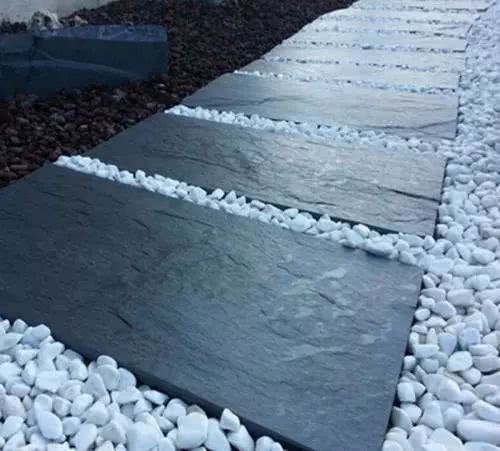How can the courtyard be the same without Ting Bu?

In Chinese classical gardens, scattered stacked stones are often dotted on the narrow and shallow surface of the water, making it easy for people to sneak around. Its name is "Ting Bu", or "step step" or "step step". There is also a "outline" in Yangzhou painting Boat record. Japan is also known as "Zefei". Ming Wen Zhenheng's Chronicles of long things said: small streams and curved streams, it is better to build them with stones.
Ting Bu seems to have several simple stone faces standing in curved streams, caves and streams, but it shows the effect of "a vast expanse of mountains and rivers within a short distance", but reflects the deep and infinite natural weather.
Ting step type:
1. Routine step
The use of this ancient water-crossing facility in the garden is simple, natural and interesting. Although Ting Bu is a small landscape in the garden, it does not mean dispensable. On the contrary, it is more ingenious.
2. Irregular step
The irregular arrangement of Ting steps makes the path rich in variety. Big or small, high or low, tight or sparse, or broken or continuous, just like music, soothing and hasty.
3. Ting step in dry land
Like a bridge is not a bridge, like a stone is not between the stone, there is no bridge shape, but there is the meaning of crossing the bridge.
People stand Ting step, up and down the sky is integrated, water and sky reflect each other for the same color, is the watermark sky, or the sky printing water, is the relationship between people and water, or the sky is close to people, which is me, which is thing, which is nature. At this time, it does not matter whether it is the "unity of man and nature" of Tao or the "unity of Brahma and self" of Zen. What is important is that the blending of heart and thing, emotion and scene is the unity of thing and me.
- Prev

Realization method of Vertical Greening of Indoor Green planting Wall
Under the background of the increasingly tense ecological environment, indoor greening has become a trend. According to the functions of the site, there are mainly office and home. Due to the limitations of interior space, green wall has become the best choice for many people. The green wall is vertically green.
- Next

This kind of wild vegetable is covered with Bobi medicine and works. Dig a bag and eat it for the whole family for two days.
Recently, a relative came from his hometown and brought us a big bag of lantern grass. Do you think this kind of wild vegetable is very familiar? by the way, it is a dandelion, and in some places it is also called a mother-in-law, but we call it "lantern grass" in our hometown because.
Related
- Wuhan Hospital Iron Tree Blooming Result Was Instantly Frightened by the Gardener Master
- Which variety of camellia is the most fragrant and best? Which one do you like best?
- What is the small blue coat, the breeding methods and matters needing attention of the succulent plant
- Dormancy time and maintenance management of succulent plants during dormancy
- Minas succulent how to raise, Minas succulent plant pictures
- What are the varieties of winter succulent plants
- How to raise succulent plants in twelve rolls? let's take a look at some experience of breeding twelve rolls.
- Attention should be paid to water control for succulent plants during dormant period (winter and summer)
- Watering experience of twelve rolls of succulent plants
- Techniques for fertilizing succulent plants. An article will let you know how to fertilize succulent plants.

